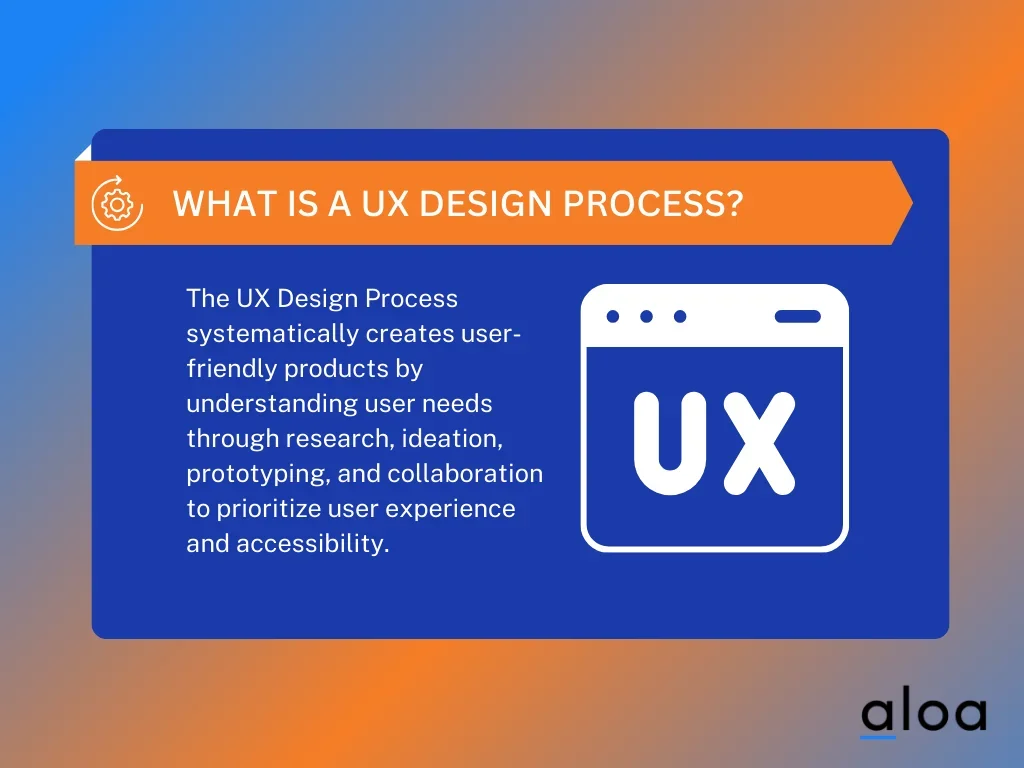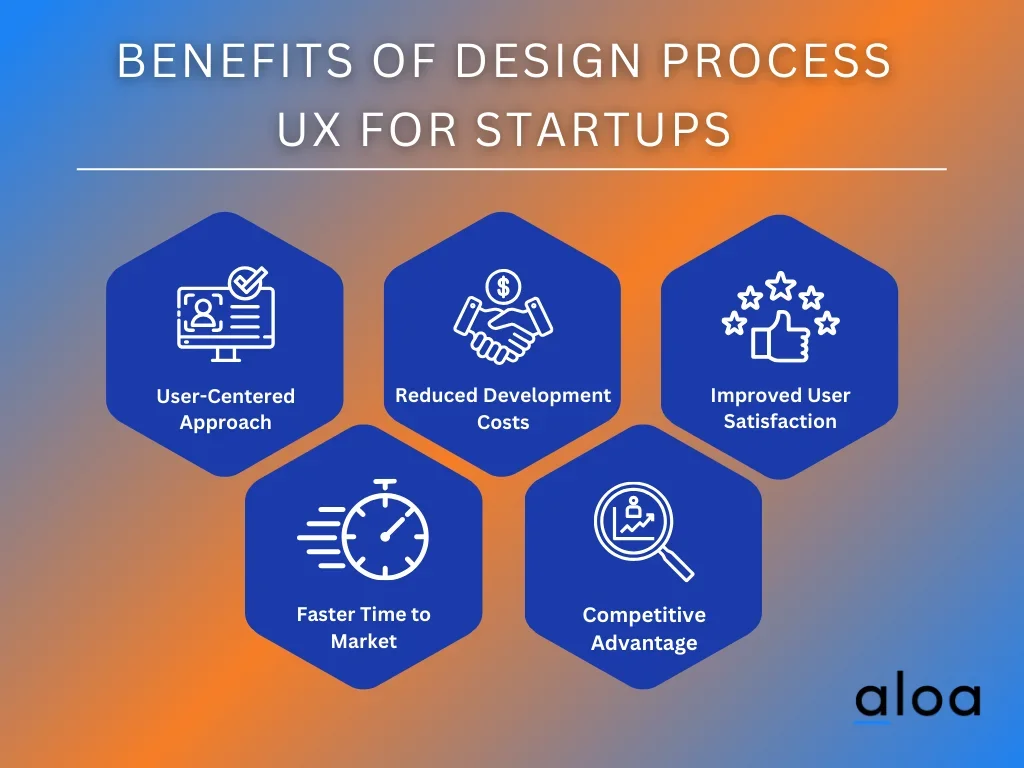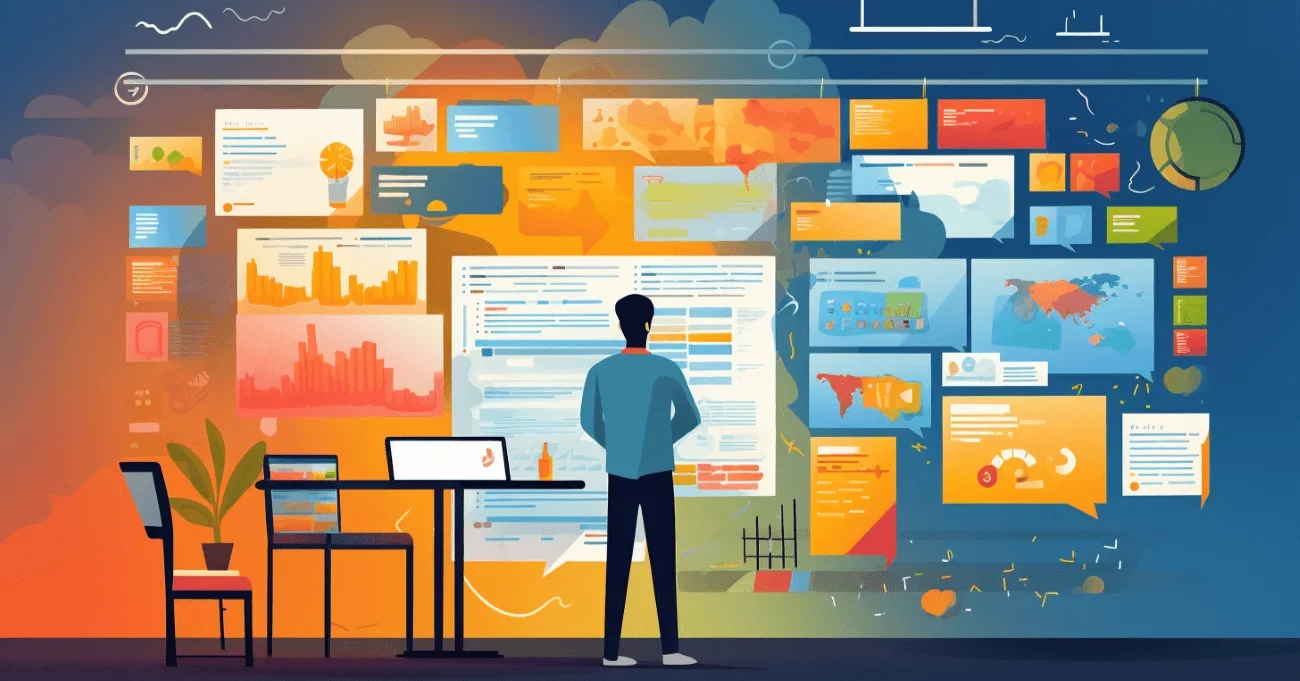The significance of UX design is crucial for startups and businesses. It serves as the driving force behind the creation of user-friendly products that not only meet but surpass customer expectations. However, the key to achieving this is correctly implementing the design process UX. When executed correctly, this process can yield remarkable outcomes. However, employing incorrect methodologies may present notable obstacles.
Aloa comprehends the significance of assisting businesses and startups in overcoming these challenges. Their expertise in UX design, usability, and user research facilitates guiding clients through the intricate UI and UX design process. They specializes in creating interfaces that deeply resonate with the intended audience, effectively addressing their pain points and developing authentic user personas. Aloa follows a meticulous step-by-step approach, encompassing sketching, prototyping, information architecture, and usability testing.
In this blog preview, we will explore the Design Process of UX for startups. Throughout this guide, we'll dive into an iterative process. By embracing this approach, your startup can not just meet but surpass user expectations when delivering exceptional digital products. Join us as we discover valuable insights on implementing a successful design process UX. These insights will help elevate your startup's user experience to new heights.
Let's jump in!
What is a UX Design Process?

UX Design Process follows a systematic approach to create user-friendly products and interfaces that resonate with the target audience. It plays a crucial role in understanding user needs, preferences, and behaviors to develop intuitive and effective solutions. The core essence of the UX design process revolves around grasping user requirements to craft seamless and impactful solutions.
User research is a vital phase in the UX design process. It involves gathering insights through methods such as interviews and surveys, which inform the creation of user personas. These personas guide the ideation phase, where designers brainstorm and sketch potential solutions. The following steps involve prototyping and wireframing, allowing for the visualization of the interface's functionality.
Collaboration among team members and stakeholders is vital throughout the entire UX process. It ensures alignment with the project's goals, making usability testing and validation with real users essential for refining the design. This iterative journey prioritizes user experience and accessibility, shaping the end product to meet users' needs and expectations.
7 Steps in a Design Process UX
User experience (UX) design is crucial to creating user-friendly products. To achieve success in the competitive startup landscape, understanding the design process in UX is paramount. Let's delve into the seven steps that make up the design process UX, equipping startups with what they need to create exceptional user experiences.

Step 1: Identifying the Project Scope
The UX design process starts by identifying the project scope. It is essential to clearly define the project's goals, objectives, and constraints. This initial step lays the groundwork for the entire design journey. Startups should outline their product's intended achievements, target user demographics, and problem-solving objectives.
During this phase, UX designers work closely with crucial stakeholders to gather insights and align on the project's scope. This collaboration ensures that everyone understands the goals and objectives while preventing any potential expansion of scope in later stages. The UX design process revolves around comprehending the user's perspective and ensuring that the project objectives are aligned with their needs.
Step 2: Conducting User Research
User research forms the foundation of the UX design process. It encompasses gathering valuable insights into user behavior, preferences, and pain points. By employing various methodologies, startups acquire a profound comprehension of their target users.
- Surveys: Surveys serve as valuable tools for gathering quantitative data on user preferences and behaviors. In the world of startups, utilizing surveys allows for collecting vital user feedback. This feedback helps in understanding pain points and identifying areas that require improvement.
- Interviews: In-depth interviews with users offer valuable qualitative insights. Through these one-on-one interactions, startups can gain a deeper understanding of user experiences, motivations, and frustrations. Interviews serve as an effective tool to uncover hidden user needs.
- Analytics: By leveraging analytics tools, startups can gain valuable insights into user behavior within their existing products or websites. Analyzing user data, including page views, click-through rates, conversion rates, patterns, and pain points can be revealed.
- User Testing: User testing involves observing users interacting with prototypes or existing products. This provides an opportunity to witness firsthand how users navigate the interface and uncover any usability issues. User testing can take place in either lab settings or remotely.
- Card Sorting: Card sorting exercises involve users organizing and categorizing information or content. This practice helps startups gain insight into how users mentally structure information, ultimately aiding in the creating intuitive navigation and information architecture.
Throughout the design process in UX, user research acts as a guiding compass. It keeps the design team anchored to the needs and expectations of the target audience, ensuring that the final product genuinely addresses user pain points and offers a seamless experience.
Step 3: Drafting Initial Solutions
With a thorough understanding of the project's scope and valuable insights gleaned from user research, startups proceed to this phase. This pivotal stage unleashes their creativity and fosters innovation.
- Sketches: Startups often embark on their journey by capturing ideas through sketches, whether on paper or digitally. These preliminary designs serve as swift and adaptable means to investigate diverse concepts, allowing for experimentation without committing to any specific direction.
- Wireframes: Wireframes serve as low-fidelity representations depicting the layout and structure of a product. They primarily emphasize content placement and functionality, providing startups with a visual depiction of the basic structure of the user interface.
- Prototypes: Wireframes serve as a foundation for prototypes. These prototypes go beyond static visuals by incorporating interactivity. By utilizing high-fidelity prototypes, designers and stakeholders can immerse themselves in the product's functionality, gaining a tangible understanding of how the final version might operate.
- Iteration: In the design process for UX, it is essential to note that this phase is not a one-shot deal. Designers must embrace iteration as a fundamental aspect. They can revisit and refine initial solutions based on valuable feedback and testing results.
In this crucial step, ideas form, and concepts spring to life. By fostering collaboration, startups can harness the collective creativity of their team members and generate groundbreaking solutions that effectively cater to the needs of users. In the prototyping stage, startups can also utilize tools like Adobe, VistaCreate or PicResize as a photo size changer to ensure their digital assets align perfectly with the user interface design.
Step 4: High-Fidelity Prototyping
High-fidelity prototyping plays a crucial role in the UX design process. It entails developing detailed prototypes that mimic the final product's user interface and functionality while allowing for interactivity. These prototypes are valuable tools for validating design choices, identifying usability issues, and refining the overall user experience.
By involving target users in the testing of high-fidelity prototypes, startups can collect valuable feedback and make necessary adjustments. This iterative approach guarantees that the final design meets user expectations.
Step 5: Usability Testing
Usability testing plays a crucial role in the design process of user experience (UX). It involves observing real individuals using a product and assessing its usability. This phase enables startups to identify pain points, uncover improvement areas, and address overlooked usability issues.
Designers and researchers observe how users interact with the product during usability testing. They carefully record user actions and gather valuable feedback. This information is vital for further iterations and improvements to ensure the final product aligns with user expectations.
Step 6: Design Handoff
As the UX design process nears its completion, the focus naturally shifts toward the crucial step of design handoff. This stage involves smoothly transferring design assets and specifications to the development team. It is essential to have clear and comprehensive documentation in place to ensure that developers can precisely implement the design.
During the design handoff, effective communication and collaboration between designers and developers form the backbone for success. This vital collaboration guarantees the integrity of the final product by staying true to the design vision and ensuring a seamless user experience.
Step 7: Product Launch
The product launch serves as the culmination of the UX design process. It is an exciting moment for startups, as it signifies the introduction of their final design to the market. This pivotal event represents the realization of months dedicated to hard work and collaboration. During this stage, startups proudly present their innovative products to eager consumers.
- Soft Launch: Some startups choose to have a soft launch. During this phase, they initially release their product to a limited audience or a specific geographic region. By doing so, they can gather early user feedback and conduct testing in a highly controlled environment.
- User Feedback: After launching their product, startups should actively encourage user feedback. This valuable input can be gathered through user reviews, customer support interactions, data analysis, and metrics.
- Data Analysis: Data analysis is an ongoing essential task for startups. By closely monitoring user behavior, engagement metrics, and conversion rates, they can gain valuable insights about how users interact with their product.
- Iteration and Updates: Startups should leverage user feedback and data analysis to enhance their product continuously. This involves being open to iteration and regularly releasing updates for improvement.
- Marketing and Promotion: Effective marketing and promotional strategies play a crucial role in reaching a broader audience and gaining market traction. Startups should utilize various channels to raise awareness and attract users.
The product launch marks a significant milestone, but it does not signify the conclusion of the design process in UX. Ongoing improvements are guided by user feedback and data-driven insights. These continuous enhancements ensure that the product adapts to evolving user needs and market demands.
Benefits of Design Process UX for Startups
Startups understand the importance of delivering an exceptional user experience to gain a competitive edge. By embracing a well-defined design process for UX, these emerging ventures can drastically transform their prospects. Let explores five crucial benefits that the design process offers to startups:

User-Centered Approach
The design process in UX centers around prioritizing users during product development. This approach emphasizes the importance of understanding user needs, behaviors, and pain points through research methods like surveys, interviews, and observations. By placing users at the core, startups can ensure that their product resonates with its target audience and has a higher chance of success.
Reduced Development Costs
Startups frequently operate with limited budgets. To save money in the long run, the design process of User Experience (UX) can be instrumental. By identifying usability issues and design flaws early on during the design phase, before substantial resources are invested in development, startups can minimize costly rework and redesigns. This iterative approach ensures that every dollar is spent wisely.
Improved User Satisfaction
Startups that prioritize the user experience design process are likelier to create products that users genuinely love. This not only improves customer satisfaction but also cultivates long-term loyalty. Satisfied users often become passionate brand advocates and actively refer others, thereby contributing to organic growth.
Faster Time to Market
While seemingly counterintuitive, following a structured design process for UX can expedite product development. By fully understanding user needs and creating well-defined user flows, startups can streamline their development team's efforts, resulting in faster and more efficient development cycles and quicker time-to-market.
Competitive Advantage
Startups operating in a saturated market face the challenge of differentiation. To stand out, they must establish a unique selling proposition. Effectively utilizing UX design processes is a critical factor in achieving success. By differentiating their product from competitors and delivering an exceptional user experience, companies can attract more users and leave a lasting impression on essential stakeholders like investors and partners. Consequently, a positive user experience can become the defining characteristic that sets startups apart from the crowded field.
Key Takeaway
The design process UX is essential for creating user-friendly products in the startup world. By following a structured approach, startups prioritize user needs and ensure successful product development. This involves conducting thorough user research, visualizing concepts through prototyping, and fostering collaboration among team members, including UI designers and development teams. Through iterative improvements based on the UX design process steps, startups can continuously enhance their offerings to meet customer expectations.
The UX team embraces user-centered design and employs design thinking principles to collaborate with key stakeholders. This collaborative approach involves mapping the user journey and effectively addressing the needs of users. As a result, it enhances the user interface and fosters a cohesive design system that benefits the entire team.
The design process UX surpasses being a mere phase; it is an essential practice that propels the success of startups by creating products that deeply resonate with genuine individuals. If you seek further insights and assistance, don't hesitate to contact us at [email protected].

